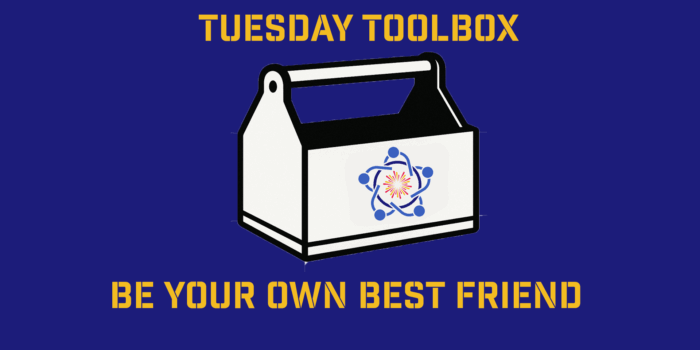My Wednesday Wish for You: To Be Your Own Best Friend We often push ourselves harder than anyone else ever…
This article from CEO Coaching International shares 4 tips to being a better CEO.
Are great leaders born or made?
In our experience, working with leaders who range from start-up entrepreneurs to CEOs of multi-billion-dollar companies, the answer is: both. We’re all born with a unique set of characteristics that influence our potential as leaders. But CEOs who take self-reflection and accountability seriously also have the power to enhance those strengths, shore up those weaknesses, and grow along with their companies.
As part of your prep for your annual planning session and a BIG 2023, take a moment to reflect on these four key ideas that could lead you from good to great next year.
1. Separate “management” from “leadership.”
“We choose to go to the moon,” said President John F. Kennedy in a famous 1962 speech. Did JFK then start building rockets and training to become an astronaut? No. He left that to NASA.
That’s the difference between leading and managing. Leaders communicate a vision so BIG and inspiring that it attracts and motivates everyone in their orbit. Then, they delegate responsibility for the daily, actionable activities that will realize that vision to managers. Of course, there are instances where management and leadership overlap. At the CEO level, there will be times when you have to manage how your c-suite executives coordinate with each other and execute key tasks. The CEO is also ultimately responsible for managing the most important internal and external business relationships, from shareholders and bankers on down to making key hires. And at the management level, effective team leaders should inspire employees to go above and beyond, challenge themselves, and connect the work they do to the company’s greater mission.
But leadership can — and will — suffer if the CEO spends too much of his or her valuable time managing. We often encourage CEOs who have drifted away from core leadership responsibilities to create a Stop Doing List. This simple but effective exercise can help you identify tasks that you should be delegating, as well as unnecessary activities that should be discontinued.
2. Inspire an “emotional commitment.”
On a recent episode of Wisdom From the Top With Guy Raz, legendary IBM CEO Lou Gerstner explained the invigorating effect that high-level leadership can have on a company. “Great leaders imbue the organization with an emotional commitment,” Gerstner said. “They create passion. They create a sense of belonging, a sense of achievement, a sense of challenge.”
The strength of that connection between you as a leader and the people working for you has become a key differentiator between companies that are suffering through the Great Resignation, and companies that are taking advantage of an unusually deep talent pool to reenergize and prepare the next step towards BIG. Yes, a decentralized workforce full of high achievers who know they have options expect more autonomy and more holistic benefits than they have in the past. But they also want to feel like what they do matters: to the company, to the world, and to you as the CEO.
Bolstering emotional commitment starts with your communication rhythm. Make sure that meetings at every level of your organization reserve space for employees to be heard. And in your own conversations with team members, set aside a few minutes to ask people how they’re doing, what they need to succeed, and what kind of additional support you can provide.
Finally, if you want to send a really strong message to your whole company about commitment and accountability, step down from the podium at this year’s annual planning session and let your CEO coach facilitate. Spend that day or two in the trenches with your employees and they’ll feel more connected to you and to the part they’re going to play in your company’s march to BIG.
3. Give your company what it needs.
One reason that many CEOs have trouble separating leadership from management is that they started their careers doing both. There might have been a time when your company genuinely needed the CEO to pitch potential customers, design products and services, or even pack boxes for tomorrow’s shipment.
But as a company passes key growth points, it requires something different from its CEO.
In the transition from working out of a bedroom to clearing that first million in revenue, the “CEO” is still deeply involved in everything. Then, as you perfect your market fit and grow into a 10, 20, or 50-million dollar business, the CEO has to let go, build out the executive team, while also generating enough momentum to maintain a growth trajectory.
External circumstances will also play a part in how you lead. If your industry is about to undergo a major transformation, your company might need the CEO to devote more time to learning and R&D. During the early months of COVID, you probably devoted extra time to crisis management while accelerating your digital pivot. Hired-gun CEOs need to work with founders, board members, and shareholders to create a unified vision of where the company should be going.
And CEOs eying an exit might focus on finding the right balance between preserving the company’s legacy while preparing it for the future.
Adapting a leadership style to challenges and opportunities doesn’t mean that the CEO abandons their long-term vision for BIG. It means that the CEO is insightful enough and humble enough to understand when change is necessary. The target can stay the same. But there may be more effective ways to lead your company towards it.
4. Reassess yourself.
A common theme that connects good leadership traits is a CEO who isn’t afraid to admit that he or she doesn’t know everything. And that kind of vulnerability isn’t easy to cultivate. The BIG job comes with so much pressure and responsibility that projecting unwavering strength and confidence at all times often feels essential. But the best leaders learn when it’s time to lower that guard and connect honestly, both with key stakeholders in the business and with themselves.
Working with a CEO coach who’s gone through the same journey that you’re going through now is perhaps the most effective way to add accountability to your leadership package. As part of our Make BIG Happen System, we help our CEO coaching clients reexamine the core identity of the business, as well as their connection to the company, their vision for its success, and potential improvements to their leadership style that can help the company get to BIG faster. In many cases, we even encourage CEOs to give themselves the same TTI Success Insights tests that they use when hiring new staff. Understanding how and why you react to various stressors is often an important step towards managing, harnessing, and improving your innate leadership traits.
Because, ultimately, no leader is ever a finished product, just like no successful company is ever really done growing or evolving. Holding yourself accountable will keep those trajectories in sync as both you and your company continue to Make BIG Happen.



